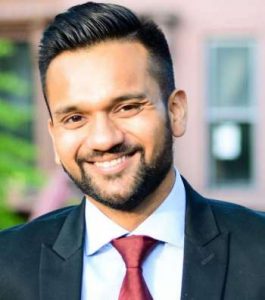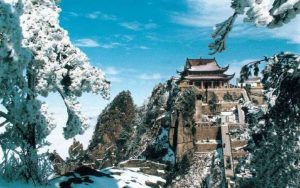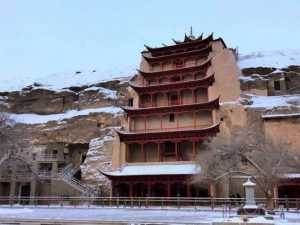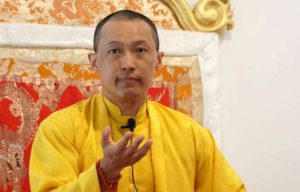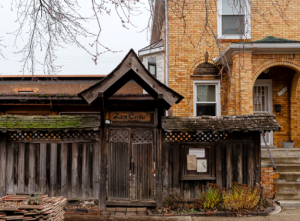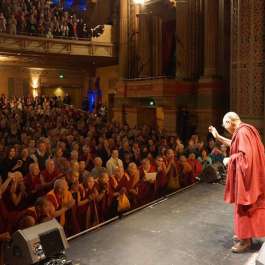On 19 May, the Eco-Temple Community Development Project of the International Network of Engaged Buddhists (INEB) held one of its regular online meetings, during which two of its Japanese leaders spoke on their work in solar and renewable energy during this critical time for world energy markets amid the Ukraine crisis. Following are some highlights and major points from their dialogue.
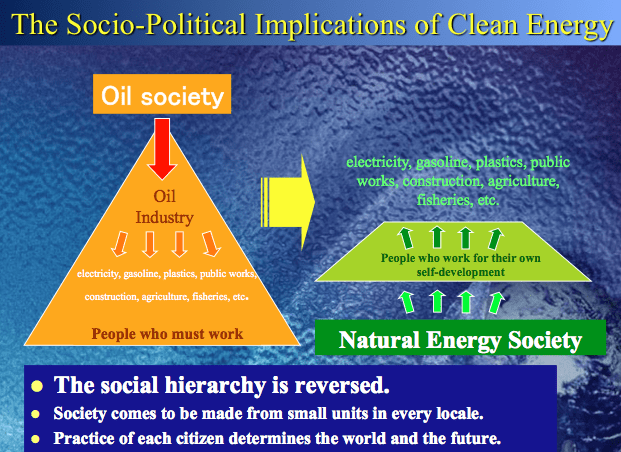
Rev. Ryogo Takemoto is a priest of the Jodo Shin Hongan-ji Pure Land tradition and in 2018 was co-founder of the Tera Energy (“Temple Energy”) power company, which reinvests earnings in religious-based community development projects.
Speaking on the recent global energy crisis, Rev. Takemoto noted: “Energy prices are obviously ramping up quite rapidly around the world. For new clean-energy companies like ours, the procurement price for power is now double what it normally is, which is making it a real struggle for all of us. Thus I feel even more strongly that we need to establish self-sufficient energy systems. As long as we are globally relying on imported oil, our whole system is very fragile. I think that people, not only here in Japan but also in the rest of the world, are feeling this. I believe that the Eco-Temple movement is a really important way to create energy self-sufficiency within local communities, and to make our lives more secure and less wasteful. Looking at the economic crisis in Sri Lanka now, I imagine that making temples into centers of renewable, clean energy could have a lot of meaning for their future. Sri Lanka has been struggling to import enough oil and fuel, resulting in rolling blackouts all over the country, and so I think that the need for local, renewable energy is quite urgent. Our group in Japan, and also our international Eco-Temple group, wants to work with not only Buddhist temples but also other religious facilities to procure renewable energy.
“Besides my work at Tera Energy, about four months ago I installed solar panels in the parking lot of my own temple along with a charging station that people can use in case of disaster or emergency. In this way, I’ve really come to notice how the amount of energy generated fluctuates depending on whether it’s sunny or cloudy. Having my own natural energy system definitely gives me a greater sense of being connected with nature. Furthermore, I recently began working with some likeminded alternative-energy companies, such as Everybody’s Power Company, to develop the “Disaster Resistant Temple” plan. The idea is to not only have solar panels, but to store the energy in batteries and provide a charging station for emergency use in the community. We also want to do things like store rainwater and install air-quality monitoring systems to frequently measure and display the amount of pollution particulates in the air. Our goal is to launch this program within the next two years.”

Rev. Hidehito Okochi is a Jodo Pure Land priest and the abbot of two temples in Tokyo. The Eco-Temple group is his brainchild, and stems from the local community development schemes he launched in the late 1990s. This work emerged out of his anti-nuclear activism with the Interfaith Forum for the Review of National Nuclear Policy, a national network of Buddhist, Christian, and Shinto priests started in Japan in 1992. Rev. Okochi has become concerned with the call from some regions, such as in France, to double down on nuclear energy development as a way to free their countries from dependency on Russian oil. This has been supported by the argument that nuclear power is a source of “clean energy” by which to combat global climate change. Yet, at the same time, there was incredible anxiety when Russia first entered the Ukraine and fighting broke out during their seizure of the former Chernobyl nuclear complex, with ballistic missiles launched at the plant complex. Subsequently, explosive warfare has occurred near Zaporizhzhia, the largest nuclear power plant in Europe.
Rev. Okochi commented: “In Japan, the government and relevant industries, with the national media following in their wake, will take just about anything as a reason to promote nuclear energy—in particular saying that it will reduce our energy self-sufficiency risks. It is then no surprise that the crisis between Russia and Ukraine is being used as an excuse to promote this kind of pro-nuclear thinking. But among our networks, we are highlighting how having nuclear power plants really creates a severe military risk for any country. The nuclear powers, such as North Korea, Russia, and the US, have their own arsenals of nuclear weapons with which to attack others. Yet Japan, by having all of these nuclear power plants (48 in total and with nine in operation), is also creating its own nuclear threat. If any of these facilities were to be attacked or bombed, we would have a nuclear explosion just as bad as one from a nuclear weapon. These fears have been heightened during the present invasion of the Ukraine.
“If you look at this situation rationally and with the proper information, it is really quite clear that energy has been the cause of many wars. The Iraq wars are a recent example. Relying on overseas fossil fuel resources has been a cause of war for more than a hundred years. So it’s really time for the world to turn its eyes toward the ample and sufficient renewable energy resources that they have in their immediate surroundings to create a more normal society. Relying on energy that comes from the other side of the planet is simply no longer suitable for our times. In Japan, this crisis has led many people to react emotionally against Russia as well as other countries considered to be a threat, such as China and North Korea. What we really need to do is to calm down, look at the situation, and realize the need to create a truly sustainable society relying on renewable energy. We Buddhist priests, as well as other clerics and people of faith, need to look at the issue more fundamentally as one of human consciousness linked with society and culture. Of course, that’s a very difficult thing to do, but that is the role we need to play as people of faith.”
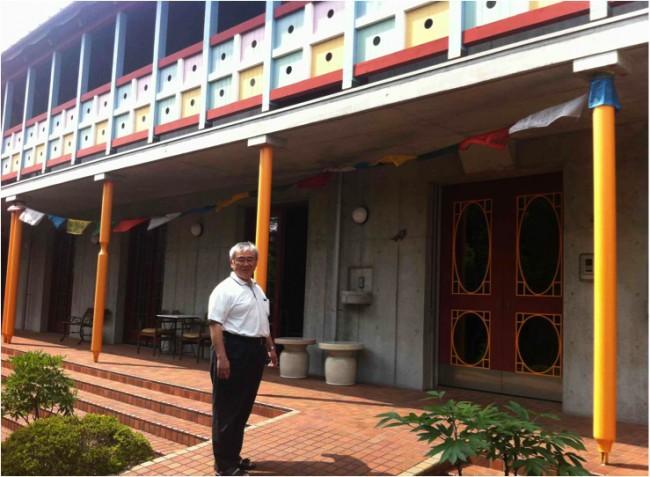
Rev. Takemoto graduated from the Japan Maritime Self-Defense Force Academy and served in the Naval Self-Defense Force before he became a Buddhist priest. From this perspective, he explained: “In the Naval Self-Defense Force, our main role is actually to protect sea lanes for shipments of petroleum to Japan. As such, I really think that relying on overseas resources like this is not only very costly but presents a very large risk in terms of national security. Relying on energy imports from another country just doesn’t make sense. Furthermore, studies here in Japan indicate a 90 per cent chance of a massive earthquake in the next 30 years along the Nankai Trough, which runs just south of the Osaka-Kobe megalopolis, westward to the large island mass of Shikoku, and down toward the main southern island of Kyushu. This area is also host to various nuclear reactors, some of which are now in operation. Having built nuclear power plants in such a risky zone was very shortsighted and shows a cavalier attitude toward life.
“Along with such structural violence is the cultural violence of the Japanese education system and how it does not provide any opportunities for people to think about the issues of energy or the risks of nuclear energy. The Liberal Democratic Party (LDP), which has ruled almost continuously since 1955, began promoting nuclear power back then by blindly following the US policy known as Atoms for Peace. Since then, these issues, like building plants on seismic faults, are hushed over. And so people in Japan have very few opportunities to learn about or even think about these issues. Energy is really a way of life, so we as Buddhist priests, or people of faith, need to present these issues of energy as one of how we are living as a civilization. I hope that we can do so in a way that doesn’t scare people off but rather is attractive and enjoyable for people as well.”

Translated by Tom Eskildsen and edited by Jonathan S. Watts.
See more
International Network of Engaged Buddhists (INEB)
Japan Network of Engaged Buddhists (JNEB)
Eco-Temple Community Development Project (JNEB)
INEB Eco-Temple
Related features from BDG
The Tangles
The Future Is Canceled Until Further Notice
Ven. Pomnyun Sunim: Buddhism in a Divided World
Related news from BDG
International Network of Engaged Buddhists Issues Statement Urging Compassion and an End to Violence in Myanmar
Engaged Buddhism: INEB Launches Sangha for Peace to Tackle Regional Religious and Ethno-Nationalist Tensions
INEB, Clear View Project Launch Humanitarian Appeal for Buddhist Monastics in Myanmar
Engaged Buddhism: INEB Shares Final Report on Mindful Action: COVID-19 Emergency Relief Fund
Engaged Buddhism: JTS Korea Donates COVID-19 Relief Supplies to Myanmar in Cooperation with INEB and KMF


